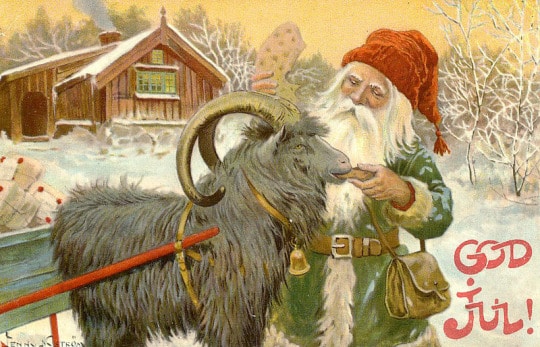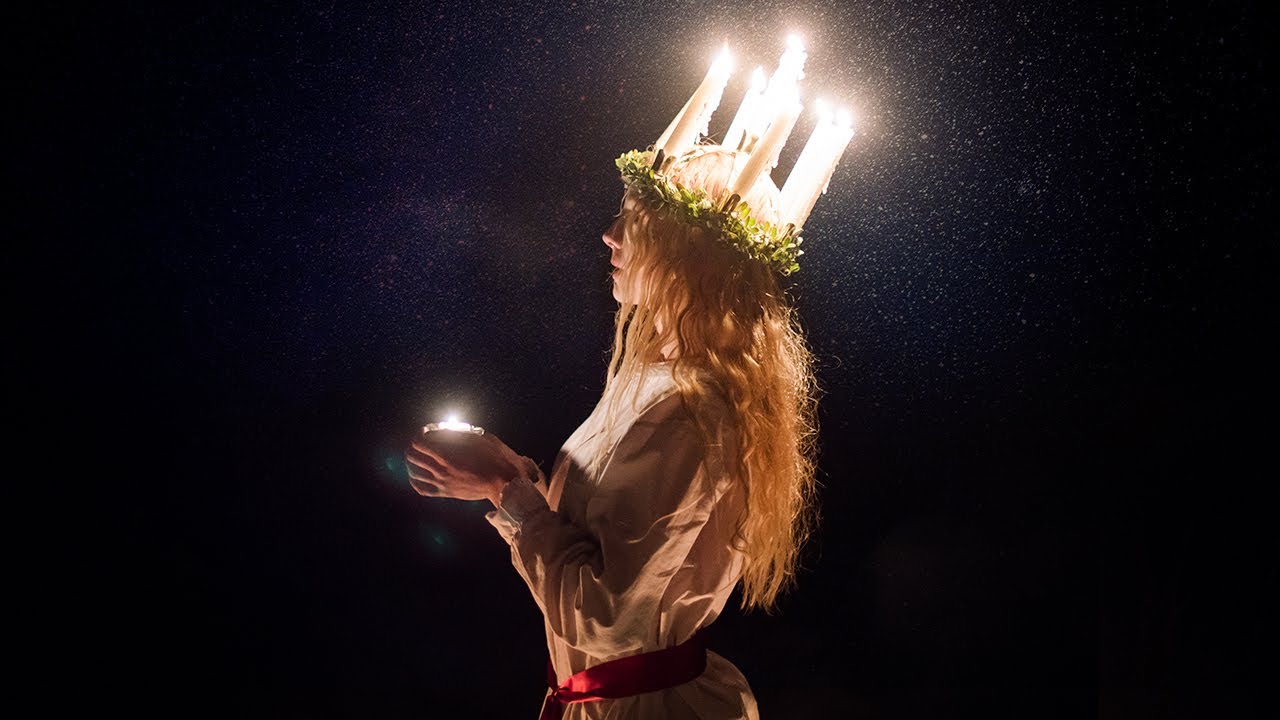Christmas, a time for festive cheer, family gatherings, and the exchange of gifts, is celebrated globally, but the traditions associated with it vary wildly across cultures. While many countries share the core elements of Christmas – a focus on family, religious observances, and the spirit of giving – countless unique customs and beliefs add a fascinating layer of diversity to the holiday. Stepping away from the familiar sights of decorated trees and Santa Claus, we embark on a journey to discover 10 unusual Christmas traditions around the world you may not know about.
The Darker Side of Christmas: Folklore and Mythology
Christmas is often thought of as a joyful occasion filled with light and merriment, but some regions embrace darker folklore that adds an intriguing twist to their celebrations. These stories remind us that behind every cheerful facade lies a history rich in belief and tradition.
Krampus: A Tale of Good and Evil
In Austria and parts of Germany, the jolly spirit of Christmas is often accompanied by a much darker figure known as Krampus. This horned creature, rooted in Alpine folklore, serves as an antithesis to St. Nicholas. While St. Nicholas rewards well-behaved children with gifts, Krampus brings punishment to those who misbehave.
The legend has deep roots, serving as an educational tool for parents promoting good behavior among children. Youngsters are reminded that while the season is about joy and generosity, there also exists a distinct boundary between right and wrong. This balance of morality encapsulated in the Krampus story transforms the joyous celebration into a cautionary tale that has permeated through generations.
Krampuslauf parades, where participants don elaborate costumes to embody this fearsome figure, provide both entertainment and a reminder of cultural heritage. Communities gather to witness these grotesque portrayals, reinforcing traditional values wrapped in thrilling spectacle.
The Yule Goat: A Symbol of Prosperity
The Yule Goat holds a significant place in Swedish culture, originating from ancient pagan traditions related to the winter solstice celebration of Yule. This peculiar figure symbolizes both good luck and prosperity, with straw goats adorning homes and public spaces alike.
Historically associated with Norse mythology, the Yule Goat was thought to be a messenger from Thor, delivering gifts and blessings to families. Over time, the goat evolved into a symbol closely tied with Christmas celebrations, particularly in towns like Gävle, where a massive straw version is erected annually.
However, the fate of the Gävle Yule Goat has become an urban legend in itself, attracting attention for its frequent acts of vandalism, primarily arson. The anticipation surrounding its annual construction speaks volumes about community identity and the interplay between tradition and modern-day culture.
Humorous and Unique Customs: From Fertility to Kentucky Fried Chicken
While many Christmas traditions underscore morality or religious significance, others take a more light-hearted or whimsical approach, showcasing the creativity and humor inherent in diverse cultures.
Caganer: The Defecating Figurine
Catalonia, a region in Spain, embraces a rather unusual custom involving the Caganer, a small figurine depicting a peasant in the act of defecation. Placed discreetly within nativity scenes, the Caganer symbolizes fertility and good fortune, embodying the cyclical nature of life.
Though this may seem shocking to outsiders, the presence of the Caganer reflects the Catalan sense of humor and levity towards life’s natural processes. By integrating such a figure into sacred holiday displays, locals embrace the notion that life’s cycles—both the sacred and the profane—are interconnected.
Over time, the Caganer has evolved into a pop-culture phenomenon, with figures representing famous personalities, politicians, and celebrities. This humorous twist adds an engaging layer to Christmas traditions, blurring the lines between reverence and playfulness.
KFC Christmas: Japan’s Culinary Twist
Japan’s adoption of Christmas carries a distinctly Western flair, notably characterized by the phenomenon of Kentucky Fried Chicken as a holiday staple. This unconventional tradition emerged from a brilliant marketing campaign in the 1970s, positioning KFC as a festive alternative to traditional Japanese Christmas meals.
As Christmas is not a national holiday in Japan, the adoption of KFC has transformed it into a romantic evening, particularly for young couples. Long queues form outside KFC outlets on Christmas Eve, illustrating how commercial practices can shape cultural phenomena.
This fusion of Western and Eastern customs showcases how globalization influences local traditions. The clashing yet harmonious blend of culinary practices creates an enchanting experience that transcends cultural boundaries.
Nature-inspired Decorations: From Spiders to Candles
Across various cultures, decorations play a crucial role in creating a festive atmosphere. However, certain traditions incorporate elements from nature, steeped in symbolism and lore.
Spiderwebs: A Delicate Blessing
In Ukraine and parts of Poland, intricate spiderwebs made from straw or string adorn Christmas trees. This peculiar decoration originates from a heartwarming legend about a poor widow unable to afford Christmas decor for her children. According to the tale, spiders spun beautiful webs overnight, transforming the barren tree into a dazzling display.
Today, families create their spiderwebs, believing they bring luck and prosperity. This heartfelt custom underscores the significance of resilience and generosity present in human experiences. Such tales demonstrate how communal legends can foster connections, weaving together narratives of struggle and triumph.
St. Lucia Day: Light in the Darkness
St. Lucia Day, celebrated on December 13th in Sweden and Norway, epitomizes the return of light amidst the darkness of winter. The tradition features a young woman adorned in a white gown with a crown of candles, symbolizing hope and warmth during cold months.
The legend of St. Lucia—a martyr known for her compassion toward the poor—resonates deeply within communities, emphasizing themes of charity and kindness. Families celebrate by singing carols and sharing treats, cultivating a sense of unity and harmony.
This tradition not only enriches the holiday season but also serves as a reminder of the broader cultural significance of celebrating light and goodness in times of hardship.
Mischievous Spirits: Tales of Playfulness
Christmas characters often embody the spirit of joy and merriment, but some cultures introduce a mischievous element that adds a playful twist to celebrations.
Icelandic Yule Lads: A Festive Antics Parade
In Iceland, the festive season includes the legendary Yule Lads—thirteen characters each with unique traits and antics. Unlike traditional figures that reward good behavior, the Yule Lads are known for their playful mischief, visiting homes in the days leading up to Christmas.
These figures range from harmless pranksters to troublemakers causing minor chaos. Each lad represents different aspects of Icelandic folklore, reflecting the uniqueness of the culture. This whimsical portrayal encourages children to embrace the spirit of fun while remaining mindful of their actions throughout the year.
The emergence of the Yule Lads showcases how local customs evolve and adapt over time, infusing long-standing traditions with fresh ideas and humor.
Burning Judas: A Contradictory Celebration
A rather peculiar tradition observed in parts of Spain involves the burning of a Judas figure on Good Friday, a practice intertwining Easter and Christmas celebrations. Although primarily linked to the betrayal of Jesus Christ, this ritual has pre-Christian roots associated with spring cleaning and the purging of old beliefs.
The act of burning the effigy symbolizes the victory of good over evil, marking a transition between seasons and beliefs. This blending of traditions emphasizes how holidays can intersect and interact in unexpected ways, enriching cultural landscapes with layered meanings.
The exploration of 10 unusual Christmas traditions around the world you may not know about reveals a rich tapestry woven from diverse cultural threads. From the terrifying Krampus to the whimsical Caganer, these unique customs deepen our understanding of Christmas celebrations worldwide.
Amidst the laughter and playfulness, the darker tales and folklore remind us of the complexities underlying holiday traditions. As we appreciate the multitude of ways people express joy, gratitude, and connection during this festive season, we recognize the shared humanity that transcends borders and celebrates the universal themes of love, hope, and renewal.
By embracing the diversity of Christmas customs and traditions, we not only enrich our own celebrations but also foster a deeper appreciation for the myriad cultures that contribute to this global tapestry of festivity.






Related post
Breaking Down the Key Tactical Edgeas in the Oakland Raiders Lineup
Breaking Down the Key Tactical Edges in the Oakland Raiders’ Lineup reveals not just a football team but a storied franchise with an indomitable spirit.
The Most Heartwarming Moments of Spider Man On Screen
The world of Spider-Man is not just filled with thrilling battles and breathtaking stunts; it’s a tapestry woven with moments of profound empathy, love, and
5 Tips to Style Hoodies on Cold Winter Days
As winter settles in, many of us find ourselves reaching for cozy essentials that provide warmth and comfort. One such wardrobe staple is the hoodie.
The Truth Behind the Rumor ‘Santa Claus Is Ugly’ That Surprises Many
As the holiday season approaches, the character of Santa Claus emerges in various forms, his iconic red suit and white beard eliciting warmth and joy
Guide to Creating a Heavy Metal Sound in the Style of Tony Iommi
Heavy metal is a genre rich with history and technical prowess, and few guitarists have influenced its sound as profoundly as Tony Iommi, the legendary
Breaking Down the Key Tactical Edgeas in the Oakland Raiders Lineup
Breaking Down the Key Tactical Edges in the Oakland Raiders’ Lineup reveals not just a football team but a storied franchise with an indomitable spirit.
The Most Heartwarming Moments of Spider Man On Screen
The world of Spider-Man is not just filled with thrilling battles and breathtaking stunts; it’s a tapestry woven with moments of profound empathy, love, and
5 Tips to Style Hoodies on Cold Winter Days
As winter settles in, many of us find ourselves reaching for cozy essentials that provide warmth and comfort. One such wardrobe staple is the hoodie.
The Truth Behind the Rumor ‘Santa Claus Is Ugly’ That Surprises Many
As the holiday season approaches, the character of Santa Claus emerges in various forms, his iconic red suit and white beard eliciting warmth and joy